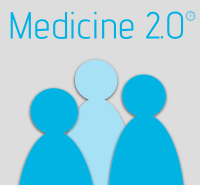Where can teens find health information? A survey of web portals designed for teen health information seekers
|
If you are the presenter of this abstract (or if you cite this abstract in a talk or on a poster), please show the QR code in your slide or poster (QR code contains this URL). |
Abstract
The Web is an important source for health information for most teens with access to the Web (Gray et al, 2005a; Kaiser, 2001). While teens are likely to turn to the Web for health information, research has indicated that their skills in locating, evaluating and using health information are weak (Hansen et al, 2003; Skinner et al, 2003, Gray et al, 2005b). This behaviour suggests that the targeted approach to finding health information that is offered by web portals would be useful to teens.
A web portal is the entry point for information on the Web. It is the front end, and often the filter, that users must pass through in order to link to actual content. Unlike general search engines such as Google, content that is linked to a portal has usually been pre-selected and even created by the organization that hosts the portal, assuring some level of quality control. The underlying architecture of the portal is structured and thus offers an organized approach to exploring a specific health topic.
This paper reports on an environmental scan of the Web, the purpose of which was to identify and describe portals to general health information, in English and French, designed specifically for teens. It answers two key questions. First of all, what portals exist? And secondly, what are their characteristics? The portals were analyzed through the lens of four attributes: Usability, interactivity, reliability and findability. Usability is a term that incorporates concepts of navigation, layout and design, clarity of concept and purpose, underlying architecture, in-site assistance and, for web content with text, readability. Interactivity relates to the type of interactions and level of engagement required by the user to access health information on a portal. Interaction can come in the form of a game, a quiz, a creative experience, or a communication tool such as an instant messaging board, a forum or blog. Reliability reflects the traditional values of accuracy, currency, credibility and bias, and in the web-based world, durabililty. Findability is simply the ease with which a portal can be discovered by a searcher using the search engine that is most commonly associated with the Web by young people - Google - and using terms related to teen health. Findability is an important consideration since the majority of teens begin their search for health information using search engines (CIBER, 2008; Hansen et al, 2003). The content linked to by the portals was not evaluated, nor was the portals’ efficacy as a health intervention.
Teens looking for health information on the Web in English have a wide range of choices available but French-language portals are much rarer and harder to find. A majority of the portals found and reviewed originated from hospitals, associations specializing in a particular disease, and governmental agencies, suggesting that portals for teens on health related topics are generally reliable. However, only a handful of the portals reviewed were easy to find, suggesting that valuable resources for teens remain buried in the Web.
Attendees will be provided with a comprehensive list of portals to general health information, in English and French, designed specifically for teens.
A web portal is the entry point for information on the Web. It is the front end, and often the filter, that users must pass through in order to link to actual content. Unlike general search engines such as Google, content that is linked to a portal has usually been pre-selected and even created by the organization that hosts the portal, assuring some level of quality control. The underlying architecture of the portal is structured and thus offers an organized approach to exploring a specific health topic.
This paper reports on an environmental scan of the Web, the purpose of which was to identify and describe portals to general health information, in English and French, designed specifically for teens. It answers two key questions. First of all, what portals exist? And secondly, what are their characteristics? The portals were analyzed through the lens of four attributes: Usability, interactivity, reliability and findability. Usability is a term that incorporates concepts of navigation, layout and design, clarity of concept and purpose, underlying architecture, in-site assistance and, for web content with text, readability. Interactivity relates to the type of interactions and level of engagement required by the user to access health information on a portal. Interaction can come in the form of a game, a quiz, a creative experience, or a communication tool such as an instant messaging board, a forum or blog. Reliability reflects the traditional values of accuracy, currency, credibility and bias, and in the web-based world, durabililty. Findability is simply the ease with which a portal can be discovered by a searcher using the search engine that is most commonly associated with the Web by young people - Google - and using terms related to teen health. Findability is an important consideration since the majority of teens begin their search for health information using search engines (CIBER, 2008; Hansen et al, 2003). The content linked to by the portals was not evaluated, nor was the portals’ efficacy as a health intervention.
Teens looking for health information on the Web in English have a wide range of choices available but French-language portals are much rarer and harder to find. A majority of the portals found and reviewed originated from hospitals, associations specializing in a particular disease, and governmental agencies, suggesting that portals for teens on health related topics are generally reliable. However, only a handful of the portals reviewed were easy to find, suggesting that valuable resources for teens remain buried in the Web.
Attendees will be provided with a comprehensive list of portals to general health information, in English and French, designed specifically for teens.

Medicine 2.0® is happy to support and promote other conferences and workshops in this area. Contact us to produce, disseminate and promote your conference or workshop under this label and in this event series. In addition, we are always looking for hosts of future World Congresses. Medicine 2.0® is a registered trademark of JMIR Publications Inc., the leading academic ehealth publisher.

This work is licensed under a Creative Commons Attribution 3.0 License.



